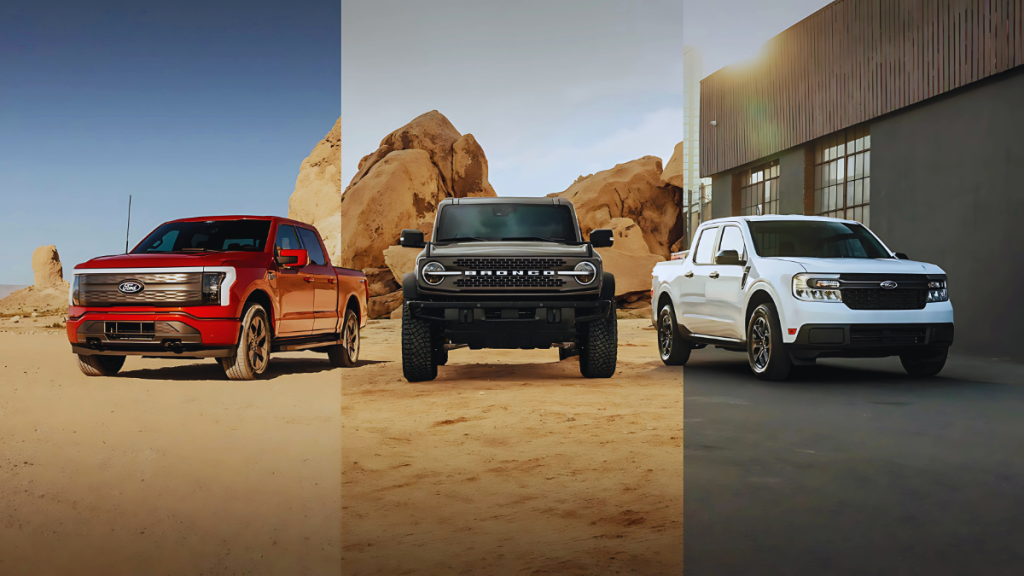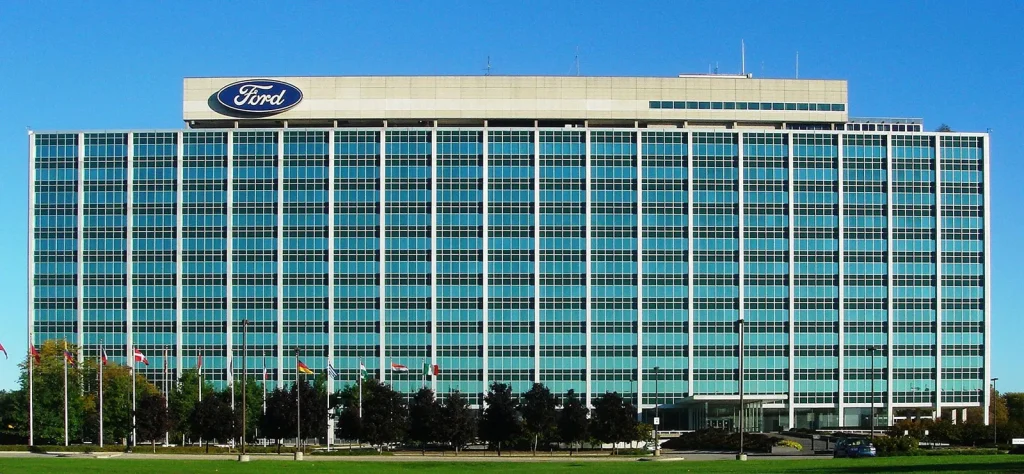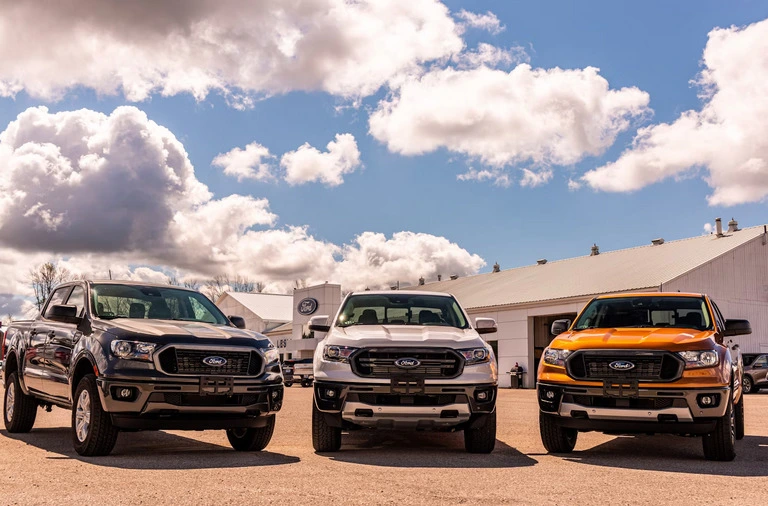The story of the Ford Motor Company is one of innovation, resilience, and transformation. It begins on a humble farm in Dearborn, Michigan, and unfolds into a global industrial revolution that forever changed the way the world moves. From the vision of Henry Ford, who pioneered mass automobile production, to the bold leadership of Henry Ford II, who modernized and expanded the company, Ford’s legacy is deeply intertwined with America’s industrial and cultural identity. This article explores the full history and evolution of the Ford Motor Company, its triumphs, setbacks, and continuing journey in the global automotive landscape.
👉 Click here to Watch the full story on YouTube
Early Life and Vision of Henry Ford
Henry Ford was born on July 30, 1863, in what is now Dearborn, Michigan. The eldest of six children in a farming family, he was expected to take over the farm. However, he found little joy in agriculture. From a young age, Henry exhibited an exceptional interest in mechanics. At 12, he dismantled and reassembled a pocket watch gifted by his father. By 15, he had built his own steam engine. Recognizing his passion, Ford’s parents allowed him to move to Detroit at 16, where he apprenticed at machine shops and later worked for the Edison Illuminating Company. There, he climbed to the position of Chief Engineer.
During this time, Henry Ford began developing gasoline-powered engines. He completed his first experimental vehicle, the Quadricycle, in 1896. It was a lightweight, four-wheeled contraption with bicycle tires and no reverse gear, capable of reaching 20 mph. Although crude, the Quadricycle proved that his vision of personal, affordable motor vehicles was feasible.
Ford’s story wasn’t merely technical. It was deeply personal. After the loss of his beloved mother, Ford found refuge in machines. His devotion to simplifying transportation came from firsthand experience of rural isolation. He envisioned a world where people, even those on remote farms, had access to modern mobility. This dream wasn’t fueled by profit alone, it was about freedom and connection.
The Ford Motor Company: History of Ford (From Startup to Superpower)
After two failed business attempts, Henry Ford founded the Ford Motor Company on June 16, 1903, with $28,000 in capital and 12 investors. The company’s first model, the Model A, was a modest success. But it was the Model T, introduced in 1908, that changed everything. The Model T was reliable, durable, and affordable, priced initially at $850 and eventually lowered to $260 through innovative manufacturing.
Ford introduced the moving assembly line in 1913 at the Highland Park Plant. This reduced car assembly time from over 12 hours to just 93 minutes, revolutionizing not only the auto industry but all of manufacturing. Ford’s “Five Dollar Day” initiative in 1914, which doubled the average wage, drew global attention. This strategy drastically reduced employee turnover and created a class of worker-consumers who could afford the cars they built.
Every Iconic Ford Model That Revolutionized the Industry
Model A (1927)
The Model A replaced the Model T after nearly two decades. It featured improved mechanical performance, stylish design, better fuel economy, and was the first Ford to incorporate safety glass.
V8 Flathead Engine (1932)
Introduced during the Great Depression, this was the first mass-produced, affordable V8 engine. It became synonymous with speed and innovation and was widely adopted by racers and hot rodders.
Lincoln Continental (1939)
Edsel Ford’s signature contribution, the Lincoln Continental introduced luxury design aesthetics and became an enduring icon of elegance.
Ford F-Series (1948–Present)
Initially designed for post-WWII America, the F-Series evolved into the most successful pickup truck line in history. The F-150 has remained America’s best-selling vehicle for decades.
Ford Thunderbird (1955)
A response to Chevrolet’s Corvette, the Thunderbird merged luxury with performance and gave birth to the personal luxury car segment.
Ford Mustang (1964)
The Mustang created the “pony car” category, compact, stylish, and performance-driven. It remains one of the most beloved American cars ever built.
Ford GT40 (1966)
Engineered to defeat Ferrari at Le Mans, the GT40 won four consecutive 24 Hours of Le Mans races (1966–1969) and cemented Ford’s dominance in motorsports.
Ford Pinto (1971)
A small, affordable car during the oil crisis, it was widely adopted, but became infamous due to safety issues related to its fuel tank.
Ford Explorer (1991)
Marked Ford’s entry into the SUV era, blending comfort, utility, and family appeal. It reshaped suburban transportation.
Ford Fusion Hybrid (2009)
One of Ford’s early ventures into hybrid technology, contributing to Ford’s environmental responsibility goals.
Mustang Mach-E (2021)
This all-electric SUV reflects Ford’s commitment to sustainable performance. It combines Mustang heritage with zero-emission engineering.
F-150 Lightning (2022)
The first fully electric version of Ford’s flagship pickup. It showcases Ford’s leadership in electrification and energy efficiency.
📻 Watch more inspiring stories: Subscribe on YouTube
Controversies, Scandals, and Setbacks
Henry Ford’s legacy includes controversial views and policies. He purchased and published the “Dearborn Independent,” a newspaper that released anti-Semitic material from 1919 to 1927. Though he issued an apology under pressure, this dark chapter remains a stain on his name.
Ford also fiercely opposed labor unions. The Battle of the Overpass in 1937 turned violent when Ford’s private security team attacked United Auto Workers organizers. It wasn’t until 1941 that Ford signed its first union contract.
In the 1970s, the Pinto fuel tank scandal erupted. Internal documents showed that Ford knowingly delayed a recall, calculating that lawsuits would be cheaper than fixes. This damaged the company’s image and sparked decades of consumer advocacy.
The Ford Family: Generations of Influence
Clara and Edsel Ford
Henry married Clara Bryant in 1888. Their son Edsel Ford, born in 1893, became president in 1919. A cultured and diplomatic leader, Edsel modernized design and expanded the Lincoln brand. He died prematurely in 1943.
Henry Ford II
Henry Ford II, Edsel’s son, returned from WWII to rescue a floundering company. He ousted powerful figures like Harry Bennett, modernized management, introduced the Whizz Kids, and led Ford into its IPO era. Under his leadership, Ford expanded internationally and challenged General Motors.
The Current Generation
William Clay Ford Jr., great-grandson of Henry Ford, currently serves as Executive Chairman. The Ford family retains control through Class B shares, giving them 40% voting power. This structure makes Ford the world’s largest family-controlled company.
Net Worth and Market Capitalization in 2025
As of May 2025, the market cap of Ford Motor Company is approximately $51.4 billion, a steady rise from $48 billion in 2024. Its growth reflects increased EV adoption, strong truck sales, and diversified revenue streams including mobility services and commercial vehicle leasing.
The Ford family’s net worth is estimated to exceed $2 billion, mostly derived from stock ownership and dividends. Unlike other billionaire families, the Fords prefer a quieter public presence while exercising substantial corporate influence.
Ford’s Global Presence and Cultural Legacy
Ford Motor Company has operations in more than 125 countries, with manufacturing plants across North America, Europe, Asia-Pacific, and South America. Brands like Ford of Europe, Ford Australia, and Ford China contribute significantly to its global footprint.
Culturally, Ford stands as a beacon of American progress. The term “Fordism” symbolizes mass production, efficiency, and high wages, core tenets of modern industrial economies. Ford’s impact can be seen in movies, music, literature, and everyday life.
Conclusion: The Road Ahead for Ford Motor Company
From a boy repairing watches on a Michigan farm to building a multi-billion-dollar global empire, Henry Ford’s vision reshaped transportation and society. Every chapter, from the Model T to the Mustang Mach-E, is a testament to the company’s resilience and ability to reinvent itself.
Today, the Ford Motor Company stands not only as a legacy of American ingenuity but also as a driving force in the transition toward electric mobility, sustainable innovation, and inclusive growth. With roots firmly grounded in family, community, and quality, Ford’s story is far from over, it’s accelerating toward a smarter, cleaner future.



